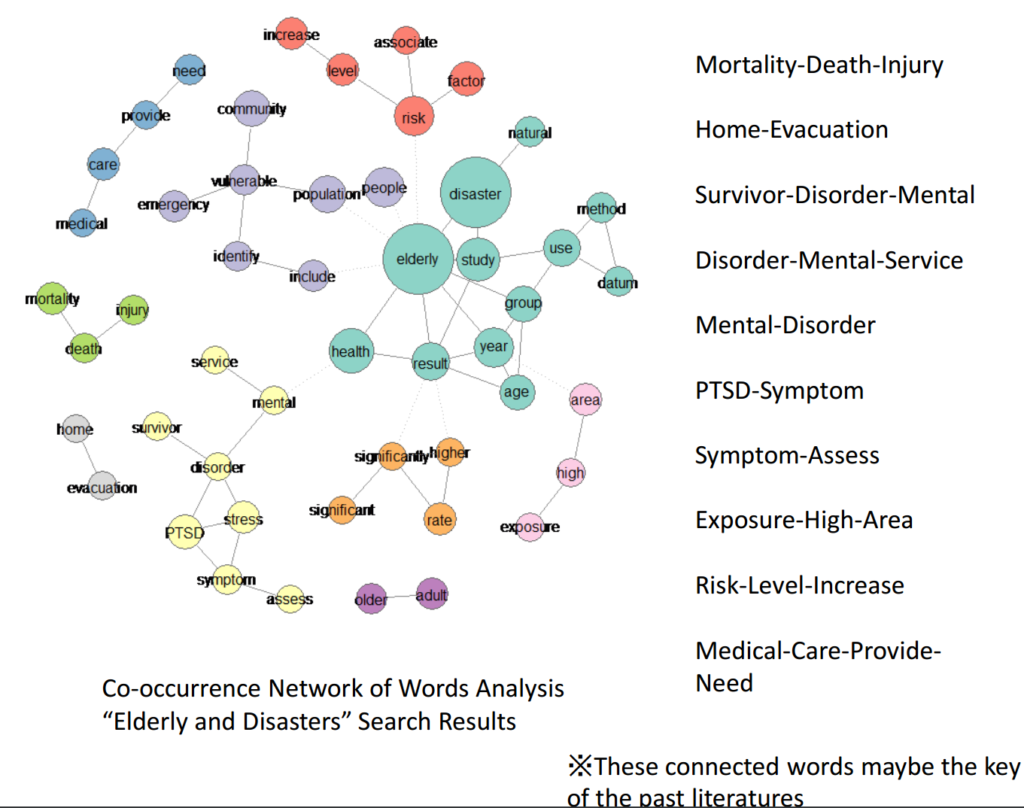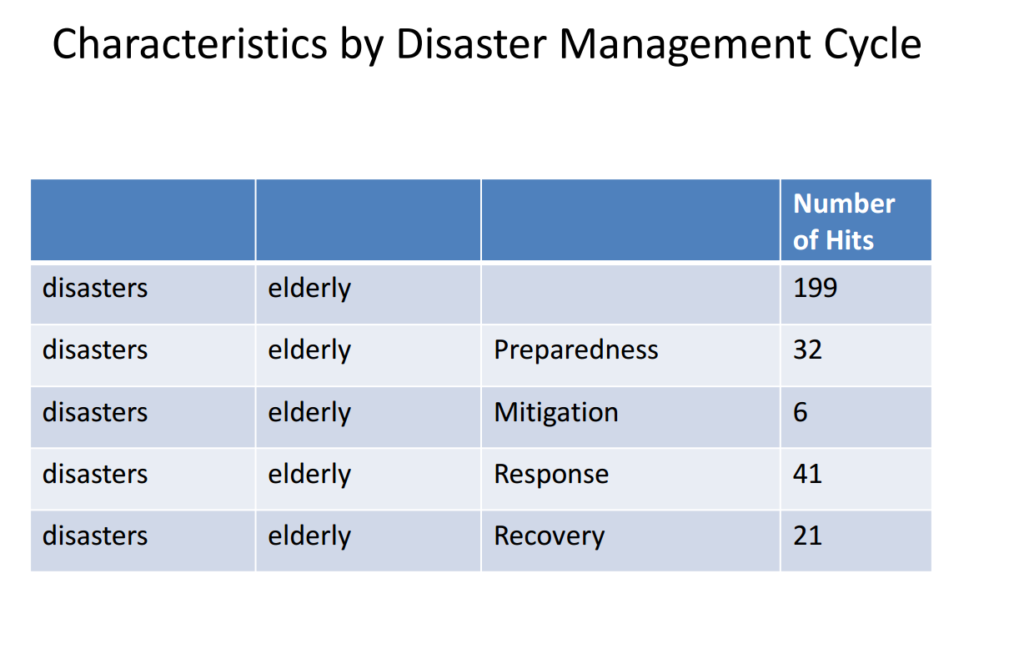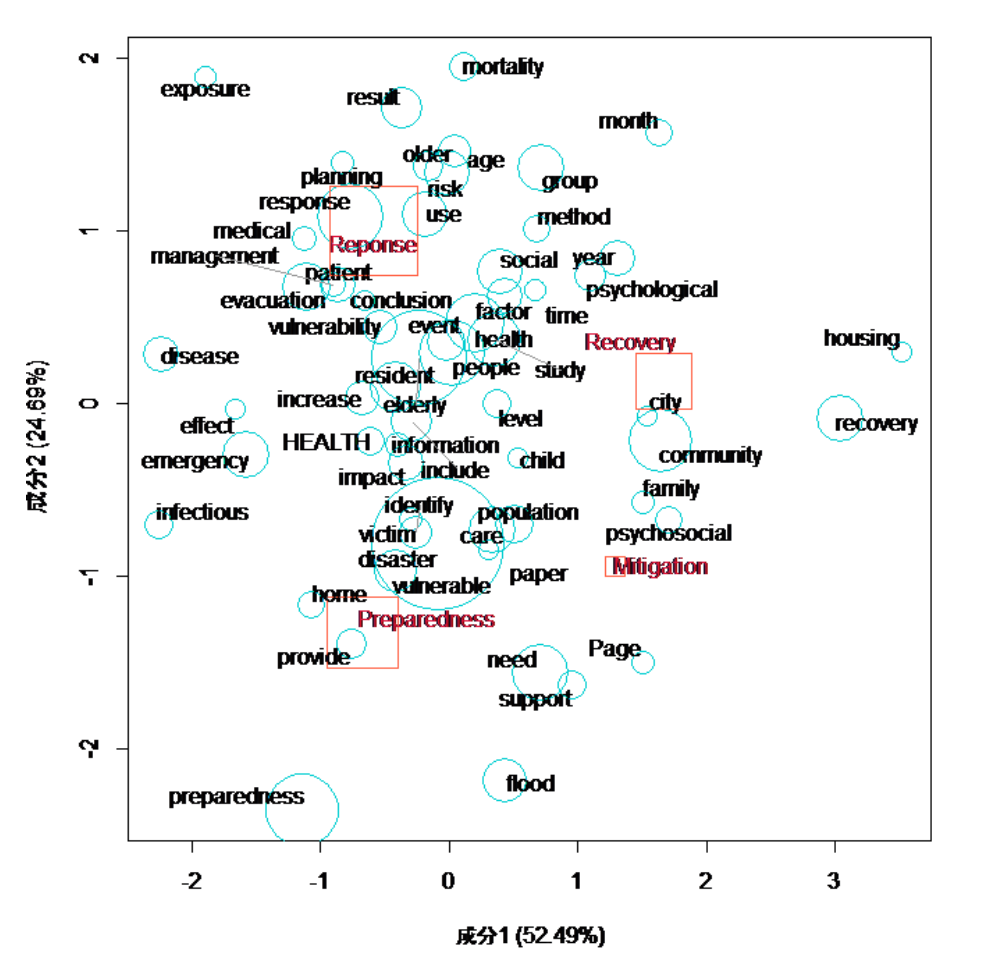Have just conducted a text mining as follows:
Overviews of the Literature concerning elderly and disasters by text mining.
<Method>
1. Search the keywords in Web of Science (Core Collection)
2. Selected Information (Titles and Abstracts) was gathered into one text file.
3.1st contents analysis has been carried out and omitted the unnecessary words.
4. Cleaning process
5. 2nd contents analysis has been carried out. >>This process was repeated
6. Research findings are examined.
7. Examine the extracted words and phrases by reaching to the original abstracts and original papers.
*To do the text mining, KH Corder was used.
Table 1 Keywords


Figure 1 A co-occurrence network analysis
Table 2 The hit numbers with disaster management cycles’ stages

Table 2 indicates that elderly issues on disasters are more discussed in relation to “response” and “preparedness” than “recovery” and “mitigation” in the disaster management cycles’ stage.

Figure2 Correspond analysis (The related words with disaster management cycles’ stages)
For example, Figure 2 suggests the close relationship between response and related words such as planning, management, medical, evacuation, vulnerability, and patient. This suggests the elderly’s difficulties for evacuation because of their physical conditions.
**This article is a revised version of Day_26(rev)
Reference:
Collection and Analysis of Overseas Disaster Evacuation Related Papers and Documents(in Japanese)




